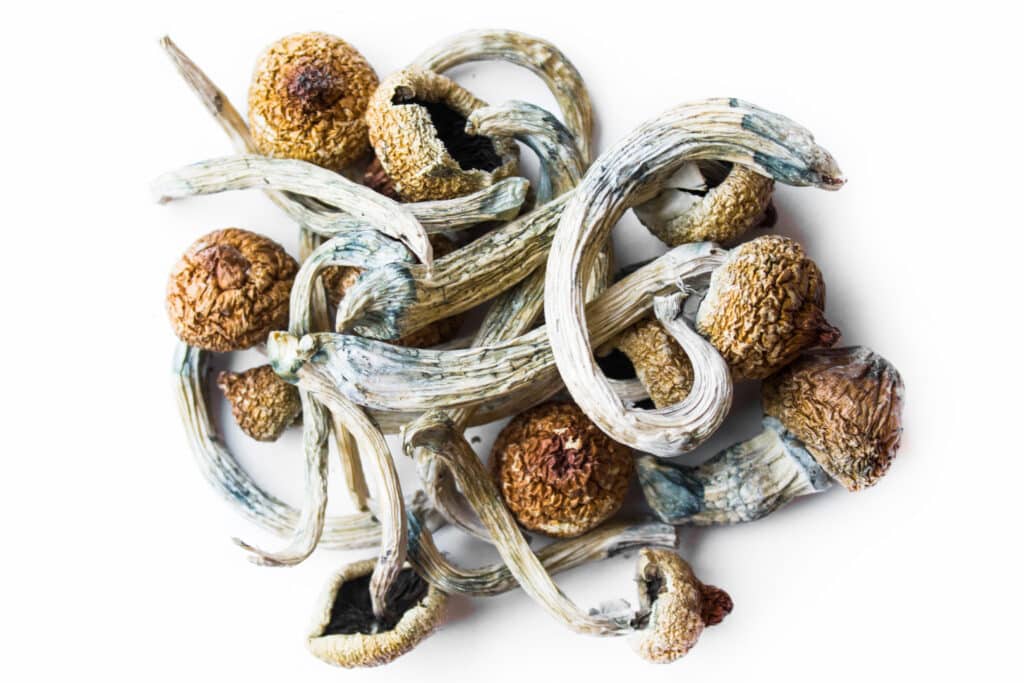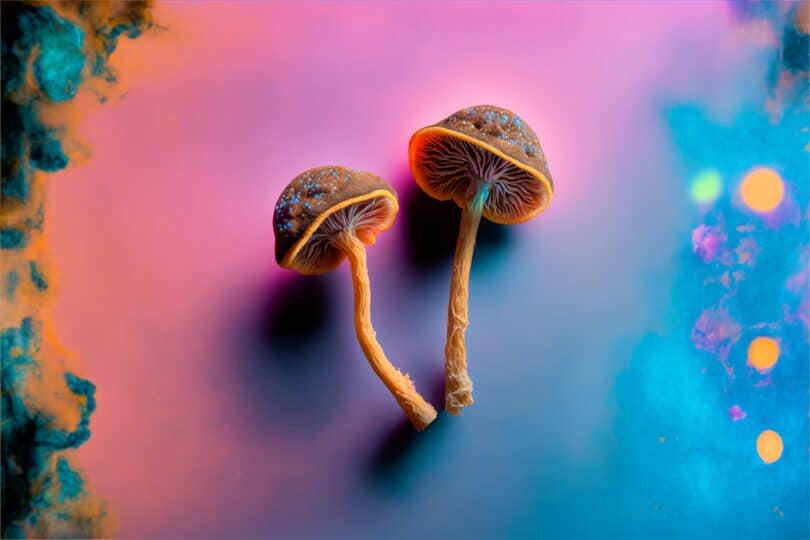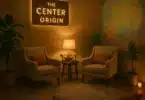Mushrooms are pretty common. As a matter of fact, there are over 14,000 identified species so far. That’s a lot to sort through, and it can be hard to know what’s safe, poisonous, or magical. One way to tell magic mushrooms from their counterparts and imposters is that they often turn blue when picked or bruised. But what exactly is the science behind this strange occurrence? It’s a mystery that has puzzled researchers for decades, but a few years ago, a team of German scientists found the answer.
All about magic mushrooms
Magic mushrooms belong to a group of fungi containing the hallucinogenic compound psilocybin (and/or trace amounts of psilocin). For the sake of simplicity, and because amanitas are not subject to bluing, we’ll be leaving them out of today’s discussion. Psilocybin mushrooms are similar to other hallucinogens like LSD and DMT, in that they all attach to serotonin receptors to create a psychoactive response. Some examples of popular magic mushrooms include: Panaeolus, Conocybe, and Psilocybe – the most well-known.
While different hallucinogens are known for causing different reactions, or trips, there are some underlying similarities with all of them such as: visual, sensory, and auditory hallucinations, feelings of spirituality, euphoria, connectedness, introspection, and overall well-being, and experiencing mystical and otherworldly encounters.
Although all magic mushrooms contain psilocybin, their potency varies and is based on the level of active compounds in each strain. What’s great about mushrooms in comparison to other hallucinogens, is that you can really customize your dose from a microdose of 0.1 to 0.3 grams, all the way to what’s known as a heroic dose which is typically 5 grams or more in one sitting.
Like all other psychedelics, the active compounds in mushrooms are listed as Schedule 1 narcotics in the DEA’s list of controlled substances. Although both psilocybin and psilocin are listed, it’s worth noting that psilocybin is the real active compound in these mushrooms. To feel the effects of the psilocybin, our bodies convert it to psilocin, which also exists in trace amounts in shrooms.
There are some loopholes when it comes to the legality of mushroom related products, such as the spores used to grow them. Those are federally legal because only the fruiting bodies contain psilocybin, the spores do not. Interestingly, mushrooms are also not scheduled in the Single Convention on Narcotic Drugs, nor on the Convention of Psychotropic Substances. This was confirmed when the INCB’s Secretary of the Board made the following statement to the Dutch Ministry of Health:
“As a matter of international law, no plants (natural material) containing psilocine (psilocin) and psilocybin are at present controlled under the Convention on Psychotropic Substances of 1971. Consequently, preparations made of these plants are not under international control and, therefore, not subject of the articles of the 1971 Convention.”
The connection between psilocybin and bluing

One of the most notable physical characteristics of psilocybin mushrooms is the blue hue they get when they get cut or bruised in some way. Aside from being indicative of the mushroom containing psilocybin, for decades mycologists struggled to figure out the root cause of the bluing. In 1967, a research team from Ithaca, New York, had a minor breakthrough when they observed the same bluing reaction in rat brain cells treated with psilocin. They claimed that oxidation of the compound is what caused the reaction.
Again, psilocin is a minor compound in mushrooms. It’s an unstable molecule that breaks down very quickly, whereas psilocybin is more stable and resilient. Researchers suspected that the compounds vulnerability to elements was the reason behind the color change, and in 2019, a German pharmaceutical microbiologist and his colleagues were able to prove it.
According to Hoffmeister, picking, cutting, or damaging the mushrooms in even the slightest way can trigger a chemical reaction that activates two different enzymes in the mushroom, PsiP and PsiL. When a mushroom is mishandled, the PsiP enzyme converts psilocybin to psilocin within the mushroom, similar to how the enzymes in the human liver do. Shortly after, the second enzyme, PsiL oxidizes the psilocin, causing it to become unstable and convert into inactive compounds.
A summary of this study published by Nature explains that “this action forces individual psilocin molecules to fuse into pairs, trios, and larger groupings; and these psilocin conglomerates appear blue to the human eye because the new chemical structures reflect blue light.”
This phenomenon has been observed elsewhere in nature, like butterflies and bluebirds for example, whose wings and feathers don’t actually contain blue pigment, but rather the blue is created by the process of light diffraction as it passes through the structures of their wings.
Are blue mushrooms more potent?
This is a common misconception, but no. Although blue bruising is a tell-tale indicator that the mushroom contains psilocybin, the connection pretty much ends there. As a matter of fact, mushrooms become less potent the more they bruise because the psilocybin is eventually converted into inactive compounds, so it’s important to handle and harvest your shrooms very carefully.
Any amount of psilocybin can create the blue bruising, so that has nothing to do with potency. Even when looking at mycelium, which is the vegetative part of the magic mushroom that consists of a network of thread-like hyphae structures. Although it’s not commonly thought of as being psychoactive, it does contain some psilocybin and also experiences the bluing reaction when bothered.
Final thoughts
The cause of bluing in magic mushrooms has long evaded mycologists and shroom enthusiasts, but thanks to a team of researchers from Germany, we now have an answer. Not only do we know why magic mushrooms turn blue when bruised, but we now know that magic mushrooms with too much blue are likely less potent than their gently handled counterparts.
Hello readers. We’re happy to have you with us at Cannadelics.com; a news source here to bring you the best in independent reporting for the growing cannabis and hallucinogen fields. Join us frequently to stay on top of everything, and subscribe to our Cannadelics Weekly Newsletter, for updates straight to your email. Check out some awesome promos for cannabis buds, smoking devices and equipment like vapes, edibles, cannabinoid compounds, amanita mushroom products, and a whole bunch more. Let’s all get stoned together!







